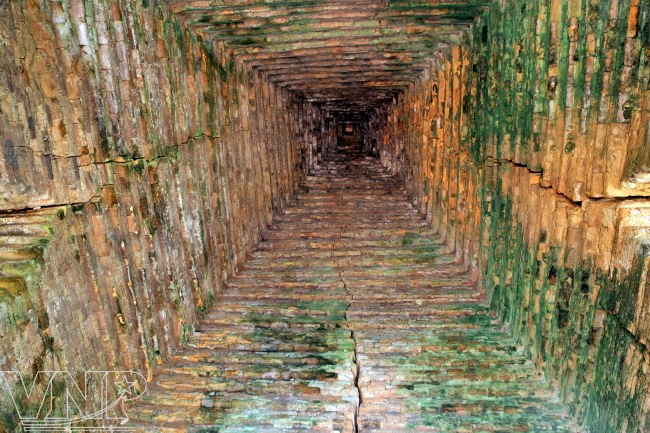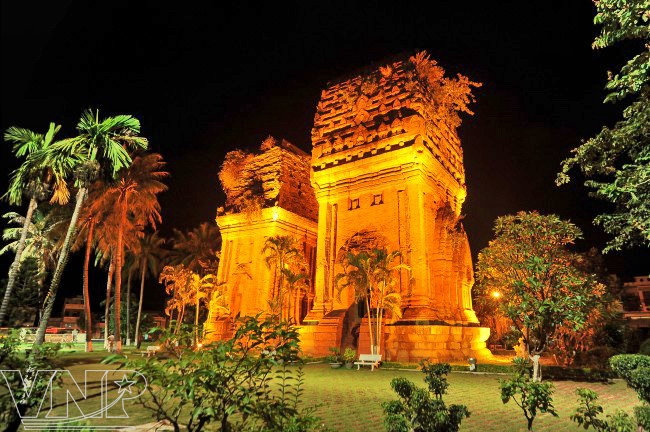According to domestic and foreign researchers, in terms of architecture, the Cham towers in Binh Dinh are the largest in Southeast Asia, mainly centered in Quy Nhon City and three districts of Tuy Phuoc, An Nhon and Tay Son in the area of Do Ban Citadel, the last kingdom of the ancient Champa Kingdom.
Despite the impacts of time, the mysterious Cham towers that are one thousand years old have remained in the windy and sunny land of Binh Dinh in the Central region as vivid evidence of the flourishing period of the ancient Champa Kingdom in the 10th-15th centuries.
The ancient Champa Kingdom was founded in the early Christian era and flourished in the 10th -15th centuries. Binh Dinh is known as its central location with a complex of 14 ancient towers remaining.

In Dai Loc Village, Phuoc Hiep Commune, Tuy Phuoc District, 10km from Quy Nhon to the north, there is a complex of Banh. It towers, also known as Bac, that were built during the 11th-12th centuries. The complex consists of four towers, about 2m high, located on a high hill in the peaceful countryside, full of sunlight and wind all year round.
In the east about 15km away, is Binh Lam Tower in Long Mai Hamlet, Phuoc Hoa Commune, Tuy Phuoc District. The tower is 20m high and divided into three floors. It is one of the towers first built in Binh Dinh, at the end of the 10th century and in the early 11th century.

In An Nhon District, there is Canh Tien Tower, also called Dong Tower, located on a mound in Nam An Village, Nhon Hau Commune. The Tower was built in the 12th century with delicate and sophisticated patterns.
The most imposing and grandiose is the area of Duong Long Towers or Nga Towers, built in the 12th – 13th centuries on the land of two villages: Van Tuong in Binh Hoa Commune and An Chanh in Tay Binh Commune, Tay Son District. The complex of these towers looks beautiful and magnificent among the remaining Cham towers in the Central region. The middle tower is 40m high while the two others are 38m. The bodies of the towers were built with bricks and the corners were grafted from large stone blocks which were skillfully carved. The upper half of the towers are large stone blocks heaped up together that were carved with Garuda bird genies, bats and eagles. The walls were decorated with leaves and images of singing and dancing performances.
At present, the Cham towers in Binh Dinh, except Hon Chuong Tower in Ba Mountain, Phu Cat District, are well preserved. The archeological excavation at these towers, with its many new discoveries about the date, structure and materials, help open the mysterious curtain of the system of the Cham towers in Binh Dinh.
Many researchers supposed that most of the adhesive used to build the Cham towers in Binh Dinh is a complicated substance, including the main ingredient which is a resin of a variety of tree growing mainly in the Central region. The resin is very sticky, durable and water-resistant.
For over thousands of years, the Cham towers in Binh Dinh have existed sustainably and contain many cultural and artistic values. For this reason, the local authorities have a plan to build up a file to submit to UNESCO to recognize the Cham Towers in Binh Dinh as a world’s cultural heritage site.
Comments